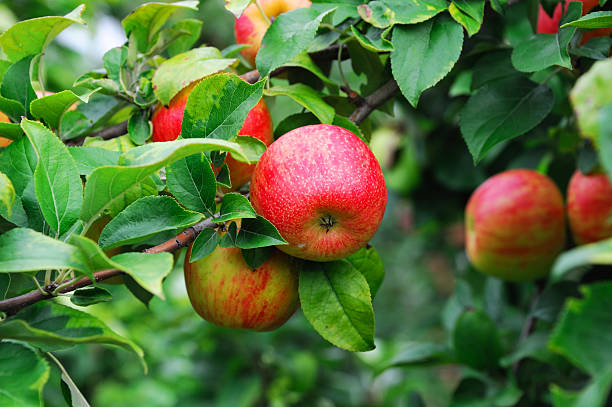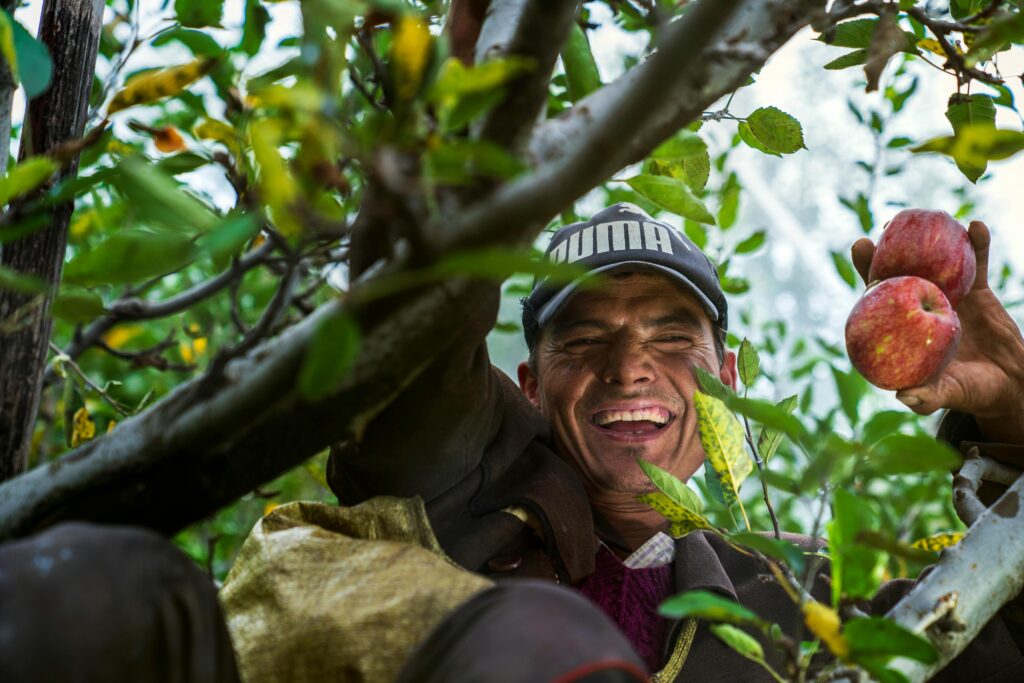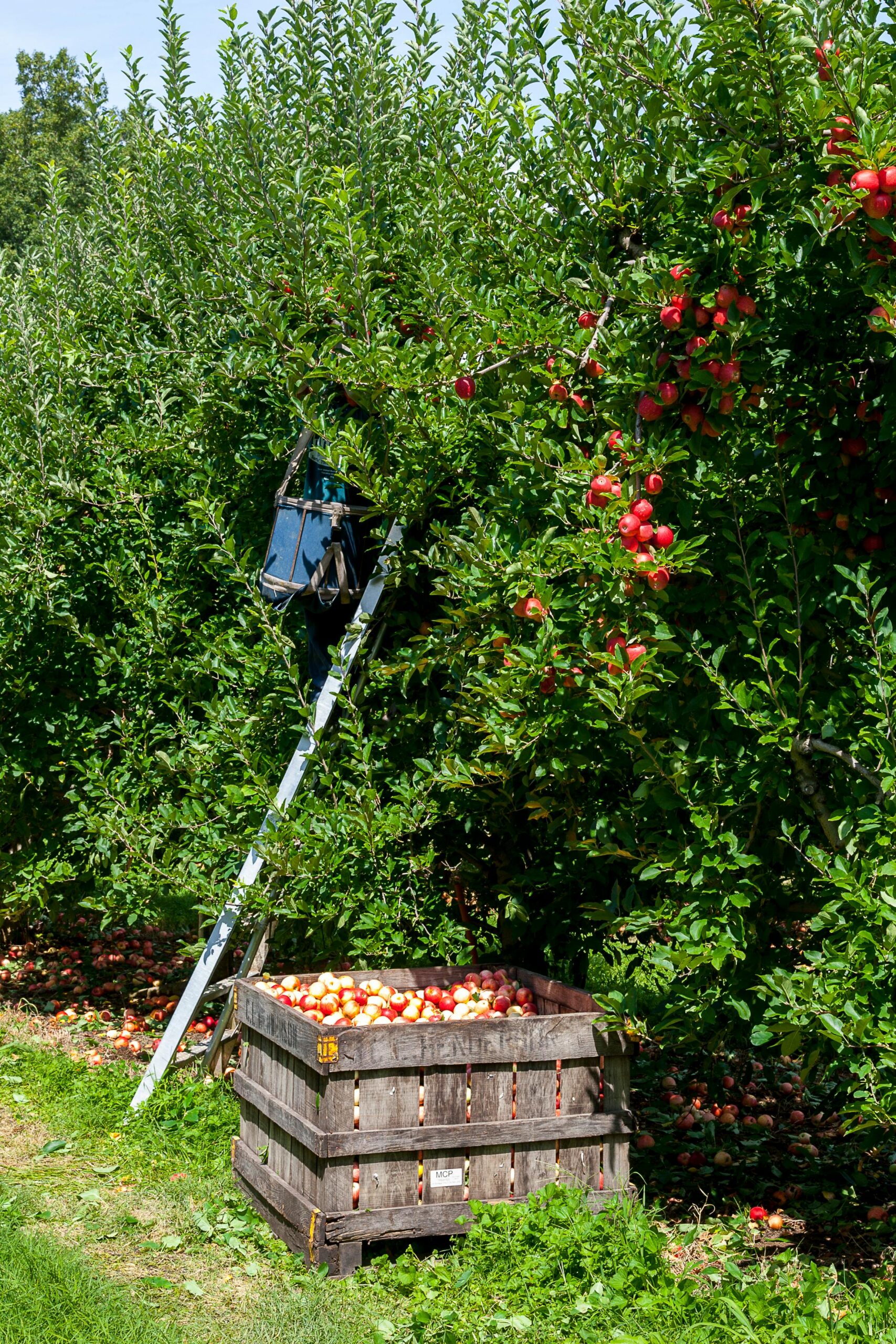Apple Tree (Malus domestica) – The Ultimate Guide to Varieties, Cultivation & Environmental Benefits
“An apple a day keeps the doctor away.”
Eating an apple daily can contribute to better health and reduce the need for doctor visits.
If you’ve ever bitten into a crisp apple on a cool autumn day, you already know why apple trees are loved around the world. But there’s so much more to these amazing trees than just their fruit.
Apple trees (Malus domestica) are not only one of the most widely grown fruit trees, but they also have a huge environmental impact—they clean the air, provide shade, and support pollinators like bees.
A Quick Science Peek: Apple Tree
- Scientific Name: Malus domestica
- Family: Rosaceae
- Lifespan: 50–100 years (yes, they can outlive you if cared for well!)
- Varieties: Over 7,500 kinds of apples exist worldwide—sweet, tart, and everything in between.
Where Do Apple Trees Grow Best?
Apple trees thrive in cool, temperate regions. Think of places with cold winters (for chilling hours) and mild summers.
Top apple-growing regions include:
🍎 USA: Washington, Michigan, New York
🍎 Europe: Poland, Italy, France
🍎 Asia: China (biggest producer), India (Himachal, Kashmir)
Why Apple Trees Are Good for the Planet
Apple orchards aren’t just about fruit—they help the environment in big ways:
✅ They absorb carbon dioxide, cleaning the air.
✅ Their roots prevent soil erosion and keep the land healthy.
✅ They give shelter to birds, bees, and other pollinators.
But here’s the flip side—unsustainable apple farming with too much pesticide and fertilizer can harm soil and water. That’s why organic and eco-friendly farming methods are the future.
The Apple Tree’s Yearly Life Cycle
- Spring: Blossoms appear (and they smell heavenly!)
- Summer: Fruits grow and ripen.
- Autumn: Harvest time!
- Winter: Trees rest until the next growing season.

Apple Growing Season
- Flowering: Spring (March–April)
- Fruit Development: Summer (May–August)
- Harvesting: Late summer to autumn (August–October)
Growing & Caring for an Apple Tree
- Planting: Loamy, well-drained soil, full sun.
- Watering: Deep watering once a week (more in hot weather).
- Feeding: Compost + a little nitrogen in early spring.
- Pruning: Trim in winter to remove dead branches and let in sunlight.
- Pest Care: Skip the chemicals—neem oil and pheromone traps work wonders.
How to Take Care of Apple Trees?
✅ Soil Preparation:
- Best soil: Loamy, fertile, well-drained
- pH: 6.0–7.0
✅ Watering:
- Young trees: 2–3 times per week
- Mature trees: 1–2 times per week, deep watering
✅ Fertilization:
- Apply organic compost or manure in early spring.
- Nitrogen fertilizers enhance leaf and shoot growth.
✅ Pruning:
- Prune in late winter to remove weak branches.
- Shape the canopy to allow sunlight and airflow.
✅ Pest & Disease Management:
| Problem | Solution |
|---|---|
| Apple Maggot | Pheromone traps |
| Codling Moth | Neem oil spray |
| Fire Blight | Copper-based fungicide |
Apple Tree & Environmental Impact
✅ Carbon Sequestration: Apple orchards absorb large amounts of CO₂, helping reduce greenhouse gases.
✅ Biodiversity Support: Orchards provide habitats for birds, insects, and pollinators.
✅ Soil Protection: Tree roots prevent soil erosion and improve water retention.
✅ Climate Resilience: Trees help moderate local climate by cooling the surrounding area.
⚠️ Negative Impacts (if poorly managed):
❌ Overuse of chemical fertilizers and pesticides can harm soil health and water quality.
❌ Large-scale monoculture farming may reduce biodiversity.
👉 Solution: Adopt organic farming, integrated pest management (IPM), and sustainable irrigation to make apple farming eco-friendly.

Why Apple Trees Are Commercially Important
Apple farming is huge business globally—and not just for fresh fruit.
🍏 Food Industry: Apples are used in juice, cider, vinegar, jams, baby food, and even snacks like dried apple chips.
🍏 Beverages: Hard apple cider is a growing industry worldwide.
🍏 Exports: Countries like China, the USA, Poland, and New Zealand export millions of tons every year.
🍏 Jobs & Rural Economy: Apple farming supports millions of farmers, workers, and traders, especially in mountainous regions where few other crops grow.
🍏 Cosmetics & Pharma: Apple extracts are used in skincare products, medicines, and even wellness supplements.
Basically, apples are not just a fruit—they’re an economic powerhouse.
Frequently Asked Questions (FAQ)
1️⃣ How long does it take for an apple tree to bear fruit?
✔️ Usually 4–6 years after planting (for grafted trees).
2️⃣ How long can an apple tree live?
✔️ With proper care, 50–100 years.
3️⃣ Which fertilizer is best for apple trees?
✔️ Use compost + nitrogen-based fertilizer in spring.
4️⃣ Can apple trees grow in hot climates?
✔️ No, they need cold winters for chilling hours.







